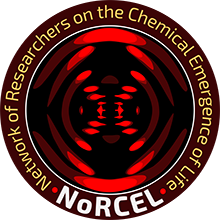Phosphorus is a key element in all living organisms but its role in life’s origin is not well understood. Molecules bearing phosphorus have been observed in the interstellar medium and other regions of space. They are prevalent in meteorites in small quantities, and have been detected in the dust component in comets 1P/Halley and 81P/Wild 2 and in the gas phase (atomic P and PO) in comet 67P/Churyumov-Gerasimenko by ESA’s Rosetta Mission.
A reactive gas dynamics model of cometary comae (SUISEI) has been adapted to study this problem. Results of this first quantitative study of P-bearing molecules in cometary comae show reaction pathways of gas-phase and photolytic chemistry for simple P-bearing molecules likely to be found in comets and important for prebiotic chemistry. The aim is to aid in future searches for this important element in comets and likely phosphorus-bearing, prebiotic species. Since comets may have delivered prebiotic material to the early Earth, this work may shed light on issues of comet formation and understanding prebiotic to biotic evolution of life. Acknowledgments: This work was supported by FAPESP under Grant No. 2015/03176-8 and the National Science Foundation Planetary Astronomy Program Grant No. 0908529.


